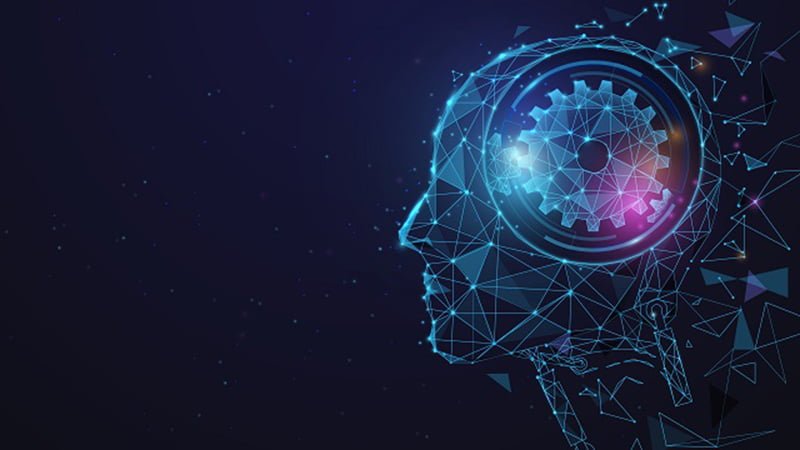No products in the cart.
‘Smart’ is The New Normal – But What Does That Even Mean?
Nothing is normal about the times we’re experiencing. Just the other day, I had a person ask me during a call what I was planning on doing 12-18 months from now when it comes to cloud design and data center development. I actually had to stop and think about that question… I wasn’t even 100% sure what day it was, let alone what will happen over the next year.
I did, however, mention that a lot of the systems we use every single day will be a lot smarter. There was a pause on the Zoom meeting when the person asked me, “well, what does that actually mean?”
There are a lot of definitions around ‘smart’ solutions. After all, we’ve had ‘smart’ phones for some time. So, in the context of technology, data centers, and you, the consumer – what does smart mean?
First, let’s start with the goals that modern smart technologies are trying to achieve. I’m going to give you Bill’s four rules for working with and understanding smart solutions:
1. Smart technologies are designed to make your life easier.
2. Smart solutions are designed to add value.
3. Smart solutions help you see patterns and interact with systems as you could never before.
4. If your smart solution complicates, fragments, or makes your environment less secure… maybe it’s not as smart as you thought.
Let me give you a specific example from a cool smart glasses/lens technology company, Mojo Vision. This is an excerpt from their website:
Through the use of augmented reality (AR), data can be presented on displays built into glasses or a headset. You can see turn-by-turn directions while walking, important steps for replacing an unfamiliar machine part, or talking points for a presentation—all without holding a device or looking down at a screen. By using a wearable display, AR helps you keep your concentration by providing information heads-up and hands-free.
Mojo Lens uses unique, purpose-built microelectronics and the world’s densest microdisplay to layer digital images and information seamlessly into your life. By providing critical information through smart software that understands your context, Mojo Lens empowers you to be your best self in any situation.
What’s interesting here is that this company isn’t trying to solve every problem out there. They’re trying to help people see a ‘better world’ and enable a better future. Smart technologies in our everyday lives have the potential to both change and disrupt our world.
This is why smart technologies in the data center are so very critical to what we do today, and, if you can see this far ahead, what will happen 12-18 months from now as well. But, let’s define smart in the context of the data center.
You’re Only as Smart as Your Data
Looking at the data center, every single piece of ‘smart’ physical componentry is driven by data. This is the lifeblood of today’s smart solutions. So, when you hear the word ‘smart’ anything… think about it from a data perspective. What information is it creating? How will this data be used? Can the information give me better insights? If your smart solutions are there to provide point-in-time details simply, they’re more so real-time designs; rather than smart systems capable of looking further out based on data patterns.
Referencing the AFCOM State of the Data Center Report directly, we must look at how our industry is both defining and using smart solutions. On that note, let’s talk about connected devices for a second. Cisco recently reported that driven by the Internet of Things, the total amount of data created (and not necessarily stored) by any device will reach 847 ZB per year by 2021. As they point out, data generated is two orders of magnitude higher than the data stored.
Looking out at 2025 and beyond, IDC predicted that by 2025, an average connected person anywhere in the world would interact with connected devices nearly 4,800 times per day — basically one interaction every 18 seconds.
These solutions will find their way into the data center if they haven’t already.
More than three in four respondents (76%) believe new technologies like IoT and Smart Sensors will impact that data center, including 30% who have already seen such technologies deployed within data centers.
Furthermore, a quarter of all respondents indicated that IoT and Smart Sensors would help redefine data center management. Specifically, focusing on DCIM, we learned that leveraging data and even machine learning is top of mind for innovative data center leaders.
When we discussed this with our AFCOM DCIM Leaders Lab participants, we found that, as far as DCIM tools and features, you already have access to some pretty powerful functions. This includes:
- Deep integration with virtualization solutions, including VMware, Citrix, Microsoft, KVM, and others.
- Integration with ITSM/ITOM tools like ServiceNow and BMC.
- Data collection services which then integrate with advanced analytics and business intelligence.
- Advanced simulation capabilities around a variety of data center systems.
- Machine Learning is leveraging data already generated by sensors, critical infrastructure, IT equipment, and applications.
- Frameworks including data collection, patterns for predictive power and thermal, command and control actions from analytics reporting, as well as tooling for custom pattern development.
- Integration with AI and Machine Learning engines like IBM Watson.
- Proactive and predictive security reporting.
- Specific solutions for managing cloud and edge environments.
It’s important to note that the list of new and advanced features will only continue to grow. What’s on the horizon? More in-depth data visualization, more integration with cloud and edge, improved solutions around security, and even augmented reality as a DCIM function.
Even our latest report indicated that most respondents (77%) feel that future DCIM systems will be even more granularly integrated with cloud and virtualization solutions. Of those, 27% are already seeing these advanced solutions in place today.
Final Thoughts: Smart Does Not Mean Complicated
This is a significant point to take away. We’ve heard of terms like ‘virtual machine sprawl’ where we have too many unmanaged or unseen virtual machines. Well, there is a real problem of ‘smart sprawl.’ Or, having smart technologies that don’t work together, were deployed by different teams that never spoke to each other, or are a pet project of a person or two that went into production. Yes, these are all real things I’ve seen happen. It’s in these that smart can quickly become a problem. Remember those four rules? Unmanaged smart systems can absolutely impact performance, uptime, and even security.
Remember, smart solutions are data-driven. And, it’s this data that makes both you and the devices or technologies smarter. Without data, the ‘smart’ device is useless. In your part of the world, take the time to understand what it means to deploy ‘smart’ technologies. Most of all, be sure to abstract and contextualize that word to see the meaning behind ‘smart.’ That is, having a deep understanding of what these solutions do, how they integrate with your data center, and what they will help you uncover in the future.
Most of all – involve your teams! The more collaboration you have around data-driven designs, the smarter everyone will become.


